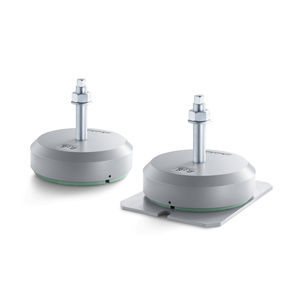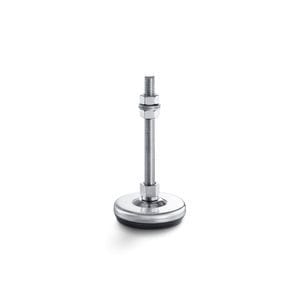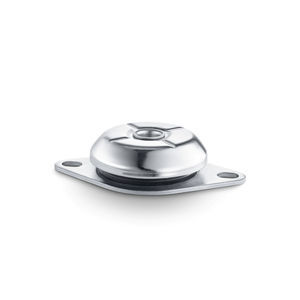
- Materials - Tools - Components
- Standard Mechanical Component
- Machine foot
- Bilz Vibration Technology AG
Machine foot BNRV / BNRSV seriessteelstainless steelleveling


Add to favorites
Compare this product
Characteristics
- Applications
- machine
- Material
- steel, stainless steel
- Type
- leveling
- Other characteristics
- threaded
- Load capacity
Min.: 1,700 kg
(3,747.9 lb)Max.: 27,500 kg
(60,627.1 lb)- Diameter
Min.: 54 mm
(2 in)Max.: 156 mm
(6 in)
Description
Round, stainless steel levelling element with compensation of angular differences by means of movable levelling bolt. Specially designed for applications in the food, pharmaceutical and cleanroom industries.
GENERAL PRODUCT DESCRIPTION
Applications
For machines in the food, semi-luxury food, packaging, chemical and pharmaceutical sectors, with corresponding mounting holes or threads in the machine base as well as for clean room applications.
BNRSV element is used where a firm connection between element and machine is required.
Any floor unevenness or angle differences of up to ± 3° are compensated for by the movable levelling screw.
TECHNICAL DATA AND VARIANTS
Note
The specified maximum load is composed of static and dynamic loading of the machine. The best insulation effect is achieved at approximately 80-90 % of the specified maximum load.
The type of insulation pads used can be found in the type description, e.g. BNRV 50/4 is equipped with B4, BNVS BNRSV 150/0 with B0 etc.
Permissible temperature range: -20 °C to +80 °C
Insulation pad properties
B4:
Medium hard pad with good vibration and structure-borne noise insulation.
Universal application
B30W:
Soft matching for a very good insulation effect, e.g. for grinding machines, test equipment, measuring machines, etc.
BR-7:
Anti-slip plate without vibration insulation.
Colour
Stainless steel
Catalogs
No catalogs are available for this product.
See all of Bilz Vibration Technology AG‘s catalogsOther Bilz Vibration Technology AG products
LEVELLING ELEMENTS
Related Searches
*Prices are pre-tax. They exclude delivery charges and customs duties and do not include additional charges for installation or activation options. Prices are indicative only and may vary by country, with changes to the cost of raw materials and exchange rates.







